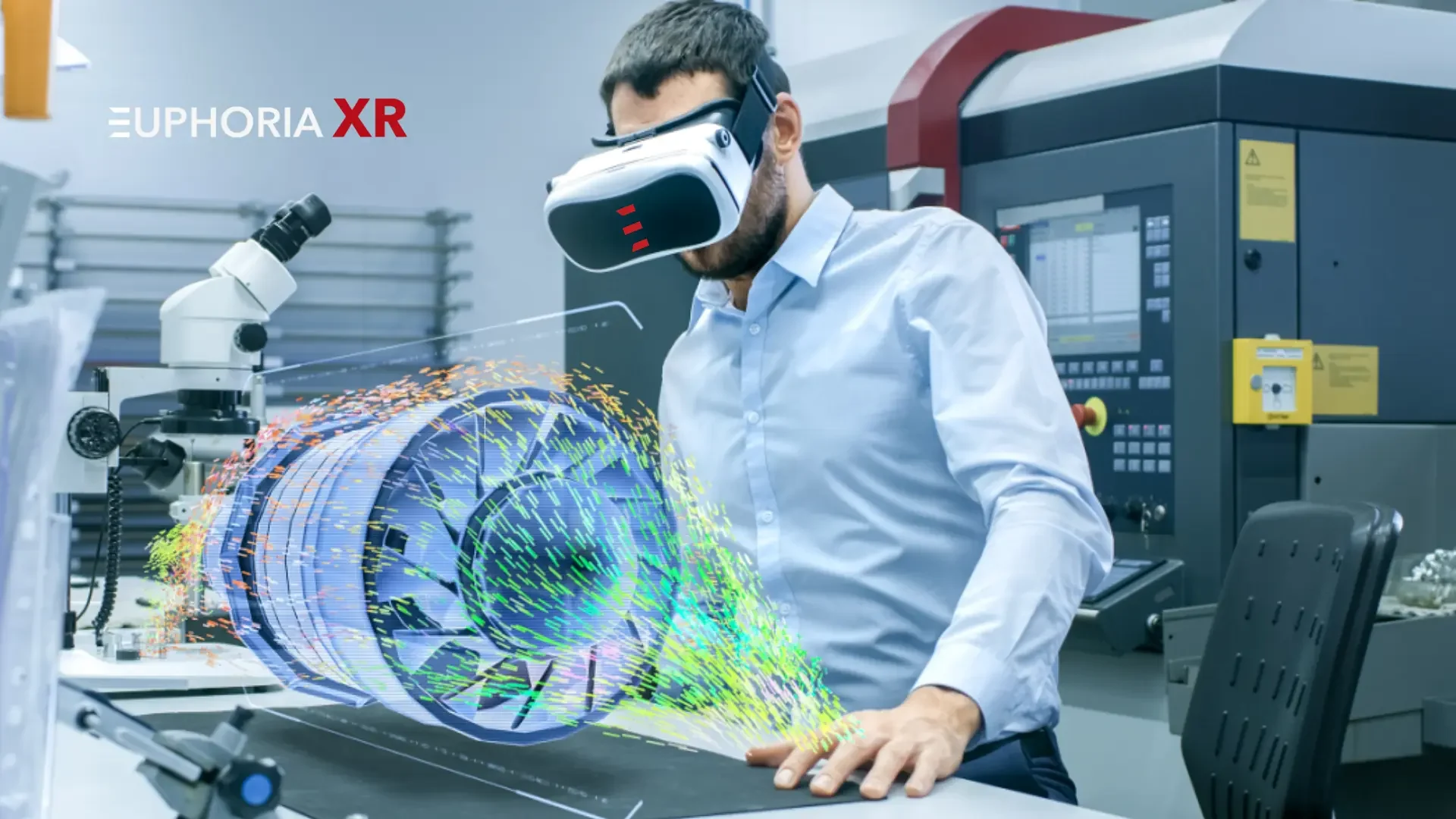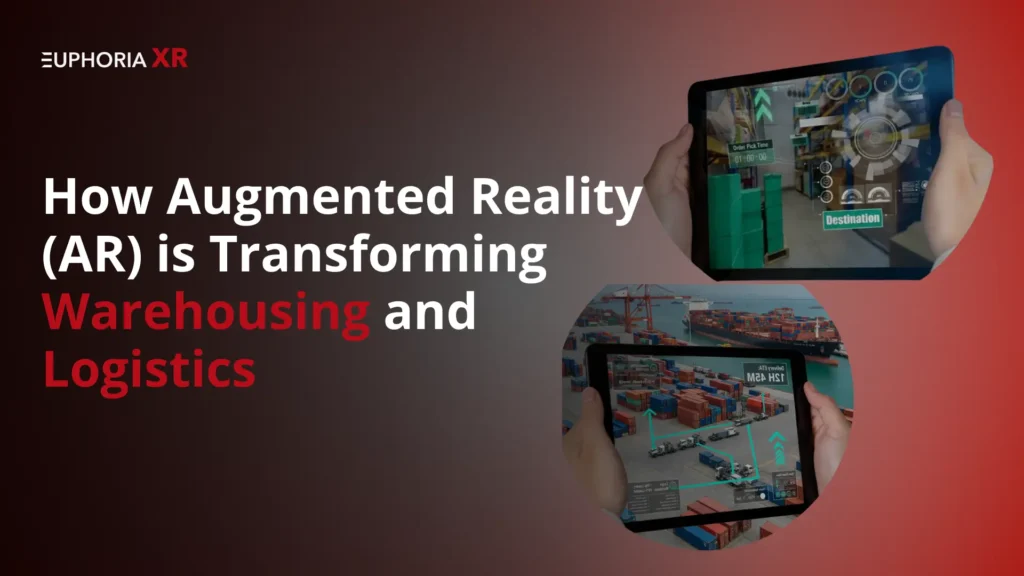In 2020, the combined market value of Augmented Reality (AR) and Virtual Reality (VR) technologies was estimated at $15.3 billion. This market is projected to expand significantly, reaching an estimated $198 billion by 2025.
Augmented Reality (AR) and Artificial Intelligence (AI) are two of the most transformative technologies of our time. Individually, they have revolutionized various industries, from gaming and entertainment to healthcare and education.
But when combined, AR and AI create a powerful synergy that promises to redefine how we interact with the world. As we look ahead, the future of Augmented Reality in AI appears bright, with emerging trends in immersive technology poised to shape the next decade.
Let’s discuss this in more detail!
What is Augmented Reality (AR)?
Augmented Reality (AR) is a technology that overlays digital content—images, sounds, or text—onto the physical world. Unlike Virtual Reality (VR), which creates a fully immersive digital environment, AR enhances the real world by adding interactive elements that can be seen and interacted with through devices like smartphones, tablets, or AR glasses. For example, AR can turn a simple walk in the park into an interactive experience by overlaying information about the plants and animals you see or by allowing you to play games that integrate with your surroundings.
A report by ISACA highlights that 70% of consumers recognize the potential benefits of AR, and businesses are eager to fulfill these demands, thereby driving the growth of the augmented reality market.
What is Artificial Intelligence (AI)?
Artificial Intelligence (AI) is the simulation of human intelligence in machines designed to think, learn, and make decisions like humans. AI systems can analyze vast amounts of data, recognize patterns, and perform tasks that typically require human intelligence, such as speech recognition, decision-making, and language translation. AI is the driving force behind many innovative technologies we use today, from virtual assistants like Siri and Alexa to more complex systems like self-driving cars and advanced diagnostic tools in healthcare.
Over 60% of business owners think productivity will rise due to new technologies. In detail, 64% believe these advancements will enhance business efficiency, and 42% expect they will simplify job processes.
Future Trends in AR and AI
As we move forward, several future trends in AR and AI are expected to emerge, pushing the boundaries of what is possible with immersive technology:
Personalized Experiences:
AI‘s ability to analyze vast amounts of data will enable AR applications to deliver highly personalized experiences. From customized learning environments in education to tailored fitness programs in health and wellness, the combination of AR and AI will make digital interactions more relevant and impactful.
Increased Human-Machine Interaction:
Integrating AR with AI will lead to more intuitive and seamless human-machine interactions. Voice recognition, gesture control, and emotion detection will become more advanced, allowing users to interact with digital content more naturally and immersively.
Advanced Healthcare Solutions:
AR and AI are set to revolutionize healthcare by providing more accurate diagnostics, real-time guidance during surgeries, and immersive training for medical professionals. AI-powered AR applications will enable doctors to visualize complex data, such as 3D models of organs, directly on a patient’s body, improving precision and outcomes.
Smart Cities and Industry 4.0:
In the context of smart cities and Industry 4.0, AR and AI will be crucial in optimizing operations, from traffic management to predictive maintenance in manufacturing. Workers with AR glasses powered by AI can access real-time data and instructions, enhancing productivity and safety.
Immersive Marketing and Retail:
The future of marketing and retail lies in creating immersive experiences that engage customers on a deeper level. Combined with AI, AR will allow brands to create interactive advertisements, virtual try-ons, and personalized shopping experiences that resonate with consumers.
|
Collaborating with an experienced Augmented Reality Development Company can help you achieve your goals and bring your vision to reality. If you’re ready to take the next step and explore the future of AR, contact us today. We’re here to discuss how we can meet your business goals. |
The Rise of AI-Driven AR Devices
Recent advancements in AR and AI are making it clear that the future of immersive technology is intertwined with these two powerful tools. A notable example is the introduction of new capabilities in AI that allow users to incorporate pictures and text prompts in their interactions with digital assistants. Combined, this enhancement exemplifies the power of AR and AI, enabling users to engage with the digital world in more dynamic ways.
Practical applications of this technology include taking a photo of a landmark while traveling and instantly receiving information about its history or significance. At home, users could take a picture of their fridge and pantry, and the technology could suggest recipes based on what is available, complete with step-by-step instructions. This visual and textual input integration highlights AR and AI’s immersive potential.
Similarly, advancements in smart glasses with powerful chips and voice interaction capabilities effectively merge AR with AI. These glasses allow users to interact with AI assistants through voice and access real-time information, adding another layer of immersive technology.
The future of AR is undeniably linked to AI. As AI evolves, it will enhance AR experiences by providing real-time insights, language translations, and personalized guidance based on what users see through AR devices. This trend signifies a shift from merely displaying holographic images to creating meaningful interactions between users and their environment.
Meta’s New Camera Glasses
Meta, the company previously known as Facebook, has recently released the second version of its camera glasses, developed in collaboration with Ray-Ban, part of EssilorLuxottica. These new glasses, priced at $299 and available from October 17, come with improved cameras, microphones, and speakers compared to the first model. They also offer the ability to livestream directly to Facebook and Instagram.
While these hardware upgrades are exciting, the most significant advancement is the incorporation of Artificial Intelligence (AI). The glasses are powered by Qualcomm’s new AR1 Gen 1 chip, which allows users to interact with the device using voice commands through the built-in microphones and speakers. This isn’t just a minor upgrade—it marks a significant step forward in integrating AI with wearable technology.
Meta has also introduced a new AI feature called Meta AI, which supports voice interactions and offers responses in 28 different synthetic voices. This AI is being integrated across Meta’s platforms, including these glasses, and can search Microsoft’s Bing for the most current information, enhancing the overall user experience.
Next year, a software update will make these Meta Ray-Ban glasses “multimodal.” This update will enable the glasses to accept visual prompts directly from the built-in cameras, allowing users to interact with the AI by simply capturing images. For example, you could look at a building and ask, “What building is this?” and receive an answer. The glasses will also offer real-time language translation of signs and menus, provide instructions for repairing household items, and more. Facial recognition technology could soon allow the glasses to identify people you encounter.
This upcoming update will transform the Meta Ray-Ban glasses into full-fledged AR glasses.
Why the Future of AR is AI
For years, companies like Apple, Microsoft, and Magic Leap have invested substantial resources to develop systems that display high-resolution 3D objects and characters through AR glasses. These systems are impressive but often come with challenges, such as being expensive, heavy, and requiring significant battery power.
In the tech world, discussions about AR often focus on the potential to see holographic images overlaid in the real world. We’ve imagined scenarios like hands-free Pokémon Go or vastly improved versions of Google Glass.
However, since the recent advancements in AI-driven technologies, it’s become apparent that holographic digital objects are only some of the crucial aspects of an AR experience.
The glasses themselves are essential. While smartphones have had AR capabilities for years, the experience of holding a phone cannot compare to viewing the world through glasses.
Cameras and sensors are also necessary because augmenting reality is only possible with them. The device needs to perceive the environment to add relevant digital information.
AI is indispensable for interpreting and understanding the people, objects, and activities within the user’s view.
Two-way audio is another critical component, allowing users to interact with the software and control their AR experience hands-free.
Surprisingly, while helpful, the visual display and virtual objects are less critical than once thought.
In past discussions about AR, visual output needs to be more emphasized, often dazzling audiences with 3D characters and flashy content. However, the real power of AR lies in its ability to provide meaningful information about the real world.
AR is powerful when a device can understand the physical world and, thanks to AI, provide insights, information, and advice about that reality.
AI is now clearly the most essential component of any general-purpose AR system.
This contrasts Virtual Reality (VR), where visual elements are paramount, and AI plays a much smaller role.
During the Meta Ray-Ban announcement, Mark Zuckerberg highlighted, “Smart glasses are the ideal form factor for AI assistants to see what you’re seeing and hear what you’re hearing.”
He is correct.
While it’s uncertain whether Meta will lead the future of AR, one thing is clear: AI is the future of AR, and AR is the future of AI. It wouldn’t be surprising to see other leading tech companies, like Microsoft and Google, introduce their AI-driven smart glasses, following Meta’s lead. The natural progression is to move from typing to talking to showing.
Leaks and reports suggest that Apple is also working on lightweight AR glasses that could be released years after its Vision Pro. However, Apple seems focused on delivering visually compelling experiences through these glasses rather than prioritizing voice interactions and AI-driven camera input.
The recent Meta Ray-Ban smart glasses announcement marks the start of a race to dominate the new platform of AI-driven AR glasses. This new computing platform promises to be significant for both consumers and enterprises. Simply put, the future of AR is AI, and the future of AI is AR.
Challenges and Considerations
While the future of Augmented Reality in AI is promising, there are challenges to consider. Privacy concerns, data security, and the ethical implications of AI decision-making are significant issues that must be addressed. Additionally, the widespread adoption of AR and AI will require robust infrastructure, such as 5G networks, to support the seamless delivery of these advanced experiences.
Moreover, the development of AR and AI technologies must be inclusive, ensuring that they are accessible to all and do not exacerbate existing inequalities. As these technologies evolve, balancing innovation and ethical responsibility is crucial.
Conclusion: The Road Ahead
The fusion of Augmented Reality and Artificial Intelligence represents a pivotal moment in the evolution of immersive technology. Future trends in AR and AI point towards a more personalized, interactive, and intelligent world where the boundaries between the physical and digital worlds blur, creating a truly immersive experience.
Euphoria XR – Your Augmented Reality Agency
Whether you’re new to using Augmented Reality (AR) in your business or have extensive experience, it doesn’t matter what stage you’re at. Selecting the right Augmented Reality Agency can be challenging. At Euphoria XR, we have a decade of experience developing AR solutions. If you have an idea, we are ready to listen. Get in touch with one of our AR Experts today.
















